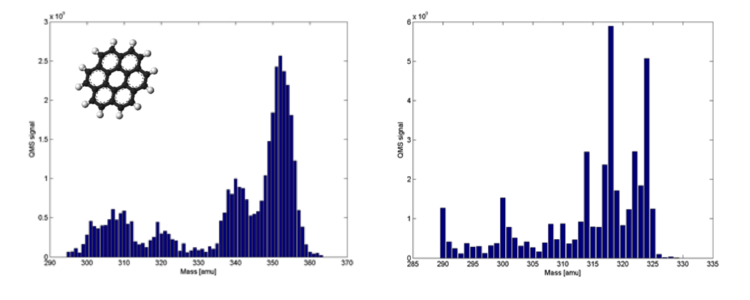
Postdoctoral fellow at
Department of Physics and Astronomy (IFA)
Aarhus University
Ny Munkegade Build. 1520
DK-8000 Aarhus C
Office: 1520-330
Email: frederik_doktor@phys.au.dk
2012 was the year I started on my bachelor’s degree in physics at Aarhus University. Since then I finished my bachelor’s degree June 2015 and started on a 4x4 PhD program September 2016 in cooperation with my supervisor Liv Hornekær. I expect to finish my PhD in the year 2020.
My research primarily evolves around experimental physics in ultra-high vacuum (UHV), specifically surface science with astrochemical/astrophysical applications. During the bachelor’s project, I worked with a technique called low-temperature scanning tunnelling microscopy (LT-STM). The primary objective was to study hydrogen adsorption on the polycyclic aromatic hydrocarbon (PAH), coronene, utilizing the sub-molecular resolution given by the LT-STM (coronene is seen in the figure inset).
My current research is an extension from my bachelor’s project conducted in cooperation with Anders Witte Skov and Pernille Ahlmann Jensen. The topic is still superhydrogenation of coronene but here we will also examine the catalytic effects that superhydrogenated PAHs could have on H2 formation in the interstellar medium (ISM). This time I use a different UHV chamber called The Big Chamber and a technique called temperature programmed desorption (TPD). TPD utilizes mass spectrometry to probe different molecules in a given sample. Different superhydrogenation states are achieved by assembling a monolayer of coronene on a graphite surface (HOPG) and subsequently exposing the molecules to different fluences of hydrogen or deuterium atoms. A following TPD measurement will reveal masses higher than the pristine coronene molecule illustrating the superhydrogenation of coronene (See figures). Important is the use of deuterium atoms to deuterate the molecules, as it will indirectly reveal HD formation by predicted abstraction reactions.

Left image is deuterated coronene after a 60 min dose and right image is hydrogenated coronene after a 25 min dose. Pristine coronene has a mass of 300amu and fully deuterated/hydrogenated is 360/324 amu